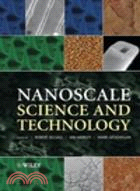Die Nanotechnologie ist ein relativ junges, stark aufstrebendes Forschungsgebiet. Durch seine ausgeprägte Interdisziplinarität müssen sich Absolventen der einzelnen naturwissenschaftlichen Fachrichtungen (etwa Physik, Chemie, Materialwissenschaften) gezielt weiterbilden, um in die Nanotechnologie einsteigen zu können. Als eines der ersten einschlägigen Bücher bereitet dieses Werk das Gebiet praxisorientiert und anschaulich speziell für diesen Zweck auf.
| FindBook |
有 1 項符合
Nanoscale Science and Technology的圖書 |
 |
NANOSCALE SCIENCE AND TECHNOLOGY 作者:KELSALL 出版社:JOHN WILEY & SONS,LTD 出版日期:2005-01-01 |
| 圖書館借閱 |
| 國家圖書館 | 全國圖書書目資訊網 | 國立公共資訊圖書館 | 電子書服務平台 | MetaCat 跨館整合查詢 |
| 臺北市立圖書館 | 新北市立圖書館 | 基隆市公共圖書館 | 桃園市立圖書館 | 新竹縣公共圖書館 |
| 苗栗縣立圖書館 | 臺中市立圖書館 | 彰化縣公共圖書館 | 南投縣文化局 | 雲林縣公共圖書館 |
| 嘉義縣圖書館 | 臺南市立圖書館 | 高雄市立圖書館 | 屏東縣公共圖書館 | 宜蘭縣公共圖書館 |
| 花蓮縣文化局 | 臺東縣文化處 |
|
|
圖書介紹 - 資料來源:博客來 評分:
圖書名稱:Nanoscale Science and Technology
內容簡介
作者簡介
Robert W Kelsall is Course director for the joint Leeds/Sheffield MSc in Nanoscale Science and Technology, which was one of the first (and is currently one of the largest) taught postgraduate nanotechnology programmes to be established in Europe. Ian Hamley and Mark Geoghegan are both actively involved in the delivery of the course. All three Editors manage substantial research programmes covering low-dimensional semiconductor devices, structured surfaces and interfaces, polymers and soft matter.
|











